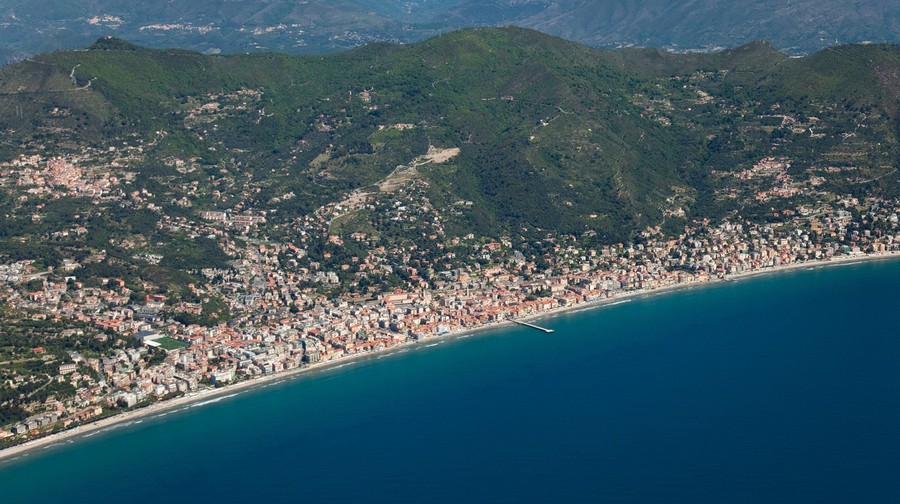Altitude: 6 m a.s.l.
Area: 17,2 sq km
Distance from Imperia: 23 km
Inhabitants: in 1881 5.517 - in 2017 10.281
Patronal Saint day: December 7th - Sant'Ambrogio
Information: Tourist Office phone 0182 602265
Alassio, which with Laigueglia is the last city of Riviera delle Palme bordering Riviera dei Fiori, enjoys a particularly favorable climate both for summer and winter stays.
The golden sandy beach, the crown of hills behind it and the Gallinara Island define the "Baia del Sole" as an amazing panorama whether you come from the east or from the west.
However, those who transformed a poor fishing village into a center of culture, wealth and elegance like no other in Liguria and perhaps, at that time, throughout Italy, came from the north.
Indeed, those who discovered the natural beauties of the place were nobles and high officials of the United Kingdom of Queen Victoria; they built houses and residences that recalled the Victorian style adapted to the sunlight, a style called Indo-Victorian in homage to the experience spent by many of them in the colonies - from which the name.
The interior decor was typically and traditionally Victorian English like the one still visible in many London homes today.
The British contributed generously to the construction of the Genoa-Ventimiglia railway, which in 1872 saved western Liguria from isolation: by train from London to Alassio.
This new service allowed the permanent residence of at least one thousand English citizens, among whom were numerous poets, painters, and naturalists who discovered and reported in their publications and palettes the beauties of Liguria which had been unknown up to that point.
Anglican was the church, English were the social and cultural life: tennis (still today it remembers their style), the bridge, the casino, the theater, the Memorial Gallery Richard West library which, with its 15,000 volumes, constitutes in Italy the English book center second only to the one in Florence. "The Alassio News" was printed fortnightly; there were of course "British stores" that survived in the city until the nineteen-sixties.
Sir Thomas Hanbury, the creator of the Botanical Gardens of Mortola in Ventimiglia, is remembered as one of the first to purchase land in Alassio, as did the Scottish general Sir William Montagu Mc Murdo who died in Nice in 1894.
To the farsightedness of Montagu and, later, to the commitment of Sir Daniel Hanbury, son of the aforementioned Sir Thomas, Alassio owes the credit of having given substance to the dream of Villa della Pergola, the Villino and the Botanical Garden.
The beautiful fairy tale of the "Englishmen in Alassio", unfortunately, ended definitively in the post-war period with the change of British society and its international power; "Villa della Pergola" consequently suffered oblivion and precariousness.
It was not until 2006 that the passion and enthusiasm of a few generous volunteers undertook, without any profit purpose, the immense work of its restoration.
The Ricci family and some friends, in collaboration with the architect Pejrone, made it a mission of carrying out this project, well aware that even its maintenance alone would require perpetual attention.
The gardens of the villa cover 22,000 square meters and represent a fascinating example of floral and plant culture of Anglo-Mediterranean style: fountains, paths, bridges, ponds, flowers of every type and of every color.
The collection of over 400 varieties of agapanthus is unique in Europe and the visit to Villa della Pergola in June is unforgettable.


